Sonus Paradisi Rotterdam Laurenskerk Main Organ (Wet Surround) Hauptwerk
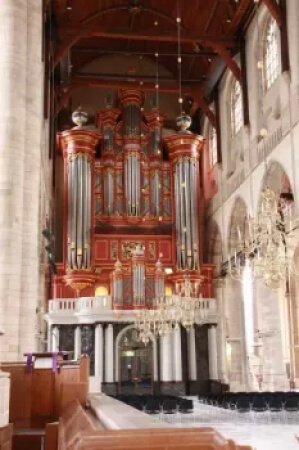
P2P | 02 October 2023 | 33.6 GB
The large gothic church of Rotterdam was built in 15th century. The church was completed in 1525. Four hundred years later it was almost destroyed by a German bombardment in May of the year 1940. The interior of the sanctuary was entirely lost due to fire. There were left only the outer walls and a part of the tower. The restoration of the church was done after the World War, between 1947-1968.
The original church had a large 3 manual organ of Hans Goltfuss from 1644, but a new instrument was to replace it in 1790. The work on the new instrument was not finished before 1828 while several organbuilders successively worked on it. In 1845 Bätz enlarged this instrument to arrive at 72 stops. Nevertheless, this instrument was destroyed completely with the church during the war time. The large organ which we can hear in the church today was built by Marcussen & Son in 1973, the organ case was designed by the architect J. W. Besemer. The instrument is based on 32-foot pedal, it consists of six divisions (Rugwerk, Hoofdwerk, Bovenwerk, Borstwerk, Chamadewerk and Pedaal). It is completely mechanical organ with 85 speaking stops and ca. 7600 pipes. It is said to be the largest purely mechanical organ in Europe. There is, however, the Barker mechanism to be switched on optionally by a foot lever to help the organist when all the manuals are coupled together. However, the full instrument can be operated without this device very well.
One striking feature of the instrument is its multi-rank Principal stops. Practically all the Principals and Octaves 16', 8', 4' of all the divisions are made of more than one unisono souding ranks. I have heard this special feature in Spanish organs for the first time (Palma di Mallorca, Santanyi ...) and it makes the sound of the Principal chorus considerably wide and deep. The timbre gets characteristically rich what cannot be achieved easily if a conventional single rank Principal stops are used. For Hauptwerk recording, this constitutes a special challenge, since the "chorus effect" of the pipes which are often not exactly in tune makes looping really difficult. Only very long samples (around 9-11 seconds) are usable for the virtual model of the organ. Another noteworthy feature is the composition of the mixtures which have unusually high number of ranks as well. The Cimbal of the Bovenwerk is remarkable for its neo-baroque composition including a quart and a sext.
A beta tester comments: "This is a remarkably colorful and beautiful organ whose sound is surprisingly gentle. None of the voicing feels harsh or pushed. Instead, we get double-rank principal stops and large mixtures with many ranks of gently-voiced pipework that result in a natural, unforced sound. In fuller ensembles, the organ roars, but it never screams - even when the chamades are playing. The sound remains beautiful and comfortable even when played for several hours in headphones."
The organ was designed to allow the performance of all organ literature. Indeed, the plenitude of stops, the complete set of horizontal reeds, the French type of reeds, strings in a swell box, rich selection of wide scaled mutations, complete Principal pyramid, full range of stops in pedal - it is all one can dream of. First, I was puzzled by the absense of the French Oboe and I had even thought of adding one virtually, but then, listening to the CDs recorded at the Rotterdam organ by Mr. Hayo Boerema organist-titulaire, convinced me that that such an addition is not needed. The swell trumpet with a nasard can be used as a convincing substitute. Thus, wide range or organ literature from Renaissance, Baroque, Romanticism up to the modern times can be performed adequately on the instrument.
home page:
https://goo.su/zwVI
DOWNLOAD
Related News:
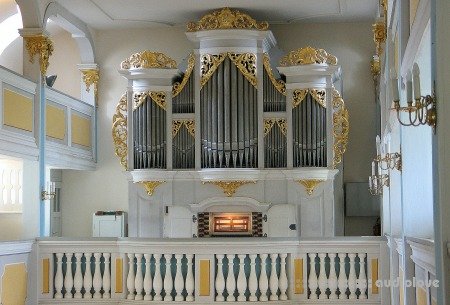 OrganArt Media 1731 Gottfried Silbermann Organ Hauptwerk
OrganArt Media 1731 Gottfried Silbermann Organ HauptwerkP2P | 29 October 2022 | 6.09 GB The instrument is located in a historical village church in East Germany near Dresden, based on a church of the 13th century, which was reconstructed and extended during the following centuries, last in 1742. The church acoustics is dry and clear because of the large amount of wooden installations....
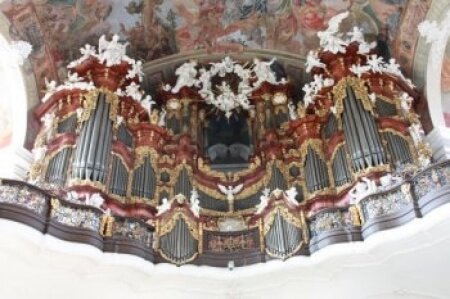 Sonus Paradisi Krzeszow Poland HAUPTWERK
Sonus Paradisi Krzeszow Poland HAUPTWERKP2P | 30 October 2021 | 11.33 GB The instrument was built in 1732-1737 by Michael Engler. A representative instrument of the Silesian organbuilding has 3 manuals and a pedal, alltogether 50 stops. The Positiv occupies the lowest manual and is positioned in two small cases in the balustrade. One case is dedicated for the C part of the windchest the other for the D part. Hauptwerk (2nd manual) and...
 Sonus Paradisi - The Forcalquier Organ Model V.2 (1627-2000) Hauptwerk WAV
Sonus Paradisi - The Forcalquier Organ Model V.2 (1627-2000) Hauptwerk WAVSonus Paradisi - The Forcalquier Organ Model V.2 (1627-2000) Hauptwerk WAV | 5.53 GB The history of the organ in the church of Forcalquier is very turbulent and only a part of the material remained from the baroque period, from the original organ. Most of it comes from a 19th and 20th century restorations....
 Hauptwerk - Prague Baroque organ (48/16 version)
Hauptwerk - Prague Baroque organ (48/16 version)Hauptwerk - Prague Baroque organ (48/16 version) | 2.37 GB While many virtual models of organs have one specific instrument as the template, we decided to take different approach this time. The advantage of presenting a "South German Organ Model" without a direct connection to certain specific instrument is that it is more clearly shown that all the organs of this family in the given period are...

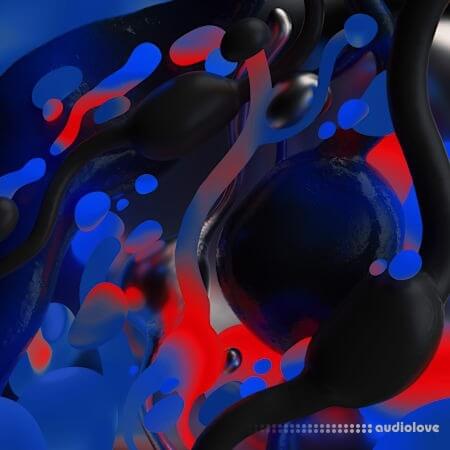

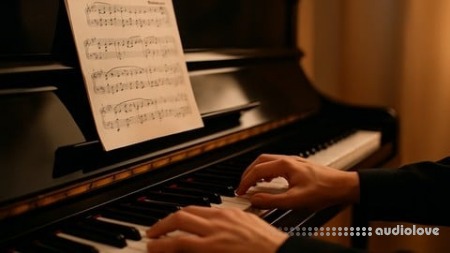
Comments for Sonus Paradisi Rotterdam Laurenskerk Main Organ (Wet Surround) Hauptwerk:
No comments yet, add a comment!